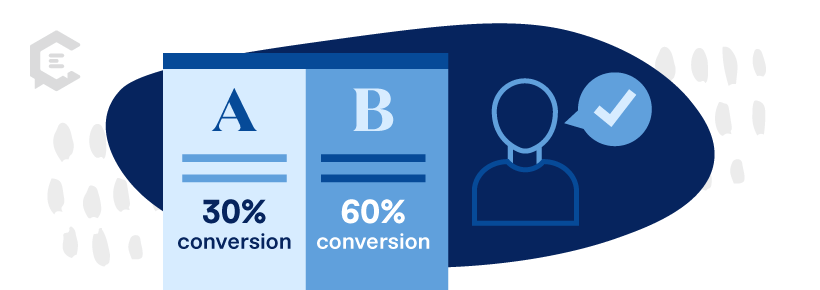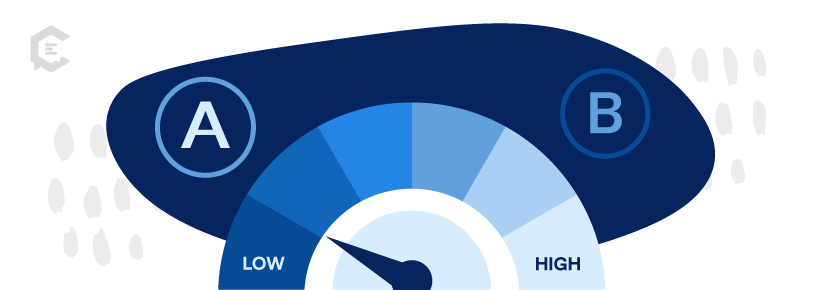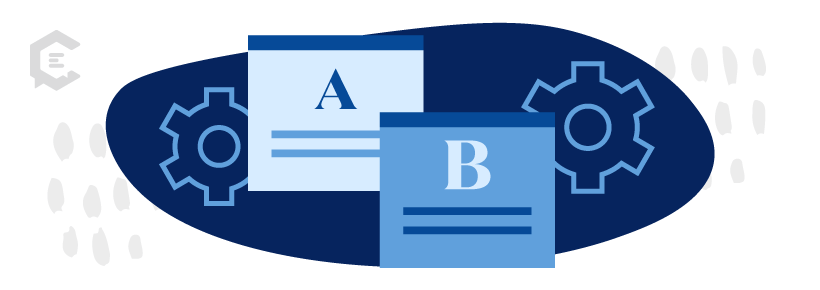What is A/B testing?
A/B testing is a simple yet incredibly effective research tool where two variations of an idea are released into the marketplace to see which method is the most effective. Also known as split testing, this method is used to refine headlines, subject lines, emails, web pages, advertisements, or any other content to determine which version performs better in achieving a specific goal. By testing different versions simultaneously, we take the guesswork out of what content resonates with our audience.

Why is A/B testing so important?
Our instincts can make us great content marketers, but our gut ideas will only get us so far — real-world marketing strategy results from trial and error, and, most importantly, testing. A/B testing allows us to design experiments for our audience, where we can learn what truly inspires them to take action. Our decisions are then made on objective data rather than subjective opinions or assumptions.
How do we get started?
While A/B testing is a simple methodology, being effective takes a little more thought and preparation.
- Define your objective: What are you trying to improve or learn about your audience? A campaign designed to increase click-through rates may look different than one focused on converting new clients.
- Identify the variable: Experiments are only effective if they test one data point at a time. Choose one specific element of your content that you want to test. It could be a headline, call-to-action (CTA), layout, color scheme, or any other component that can be altered.
- Create two versions: This is where the “A” and “B” in A/B testing make their debut. Like all experiments, we will have a control or original design, version A. Version B will incorporate the theories or variations we want to test.
- Split your audience: Divide your target audience randomly into two groups. Group A will be exposed to version A, and Group B will be exposed to version B. Making the groups random prevents you from accidentally influencing the data through subconscious assumptions about how the audience will behave.
- Measure and compare: Track the performance metrics of both versions using relevant analytics tools. This could include click-through rates, conversion rates, time spent on a page, or any other metric that aligns with your objective.
- Analyze the results: Compare the performance of A and B to identify the better version. Focus only on statistically significant differences in the metrics between the two groups.
- Iterate and optimize: A/B testing is an ongoing process. Use the insights gained from each test to inform future iterations and continuously refine your content marketing strategies.

Using A/B Testing to Mitigate Risk
Even the most basic content can be made up of thousands of little decisions. How do we know which one isn’t working? We could have killer copy, but the graphics feel confusing. Our CTA’s may be effective on the website but lose their luster on socials. We could have the best product in the world, but it’s just in the wrong color!
Our frustrations can cause us to throw the baby out with the bath water, or we can use A/B testing to pull apart, reorganize, and test various factors in our content until we determine what aspect is falling short. The ability to pinpoint your pain points saves time and money, preventing long phases of internal ideation.
The ability to reduce risk is also a major selling point when acquiring new clients. Instead of making changes based on hunches or preferences, marketers who implement regular A/B testing can rely on concrete data to guide their decision-making. This prevents implementing ineffective changes and ensures that content alterations are backed by evidence, not hunches.
A/B testing allows us to allocate our resources better. By testing and refining content, we can focus more on the efforts and investments that yield the best results. This reduces wasted resources and drastically improves the ROI of our campaigns. A/B testing fosters a culture of learning and adaptation, which will always lead to better content performance over time.
A Real-life Example of A/B Testing
Usually, A/B testing exceeds two options and considers various segments of current, potential, or past customers. Take, for example, a client sharing the news of an upcoming sale via their newsletter. It will go out to a list of the following people:
- Those who have recently purchased.
- Those who signed up for information but haven’t made a move.
- Those who actively shop in the store.
Conducting an A/B test for these groups will result in six different subject line options. Use your knowledge to create a data-driven customer profile for each group. These profiles break down your data into patterns or habits that will inform future campaigns.
- Those who have recently purchased respond more to headlines that include X.
- Those who signed up for information spend more time on X page.
- Those who actively shop in the store click through more when the articles are on the side versus at the bottom.

Other Common Uses of A/B Testing
- To optimize for the best results of a marketing goal
- To improve overall copy and brand voice
- To inform your web design
- To test various sales, promotions, and action-driving campaigns
- To guide redesign or rebranding
Need help with an upcoming A/B testing campaign? Get content for blog posts, headlines, email newsletters, landing pages, websites, and more to see what resonates best with your audience and drives the most clicks and conversions. Speak to a content specialist today to get started.



